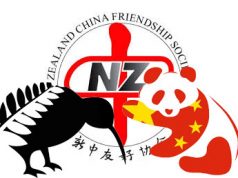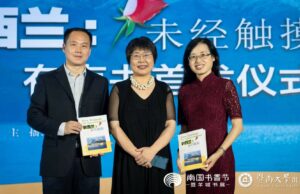Next Branch Meeting
Wednesday, 19 October 2016 at 5.45pm
Director of Cultural Section Mr. Shen Ming
Will speak on
The Art of Chinese Calligraphy
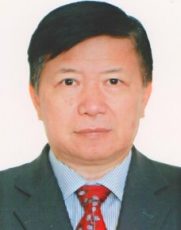 Mr. Shen Ming, the Director of Cultural Section of the Chinese Embassy in New Zealand, will give an introduction on the basic knowledge about Chinese calligraphy by displaying how to use brush-pen and ink to write Chinese characters in a beautiful form. During the Branch meeting, there will be activities for the audience to practice calligraphy.
Mr. Shen Ming, the Director of Cultural Section of the Chinese Embassy in New Zealand, will give an introduction on the basic knowledge about Chinese calligraphy by displaying how to use brush-pen and ink to write Chinese characters in a beautiful form. During the Branch meeting, there will be activities for the audience to practice calligraphy.
 Mr. Shen became interested in Chinese calligraphy from his young age. He began to learn it in his middle school and has been persistent to practice it for several decades. He facsimiled many great Chinese ancient calligraphers’ master-works and those practices enable him to master the basic skills of calligraphy. He is the member of the China Nanjing Municipal Calligraphers’ Association and many of his artworks had been displayed in the various calligraphy exhibitions in China.
Mr. Shen became interested in Chinese calligraphy from his young age. He began to learn it in his middle school and has been persistent to practice it for several decades. He facsimiled many great Chinese ancient calligraphers’ master-works and those practices enable him to master the basic skills of calligraphy. He is the member of the China Nanjing Municipal Calligraphers’ Association and many of his artworks had been displayed in the various calligraphy exhibitions in China.
An optional Chinese buffet meal, supplied by the Fujiyama Café, will follow the meeting at 7pm. Orders for the $12 meal (please pay at the door) will be taken up till 6pm. If you think you may be arriving late, please let the Secretary know in advance.
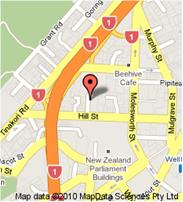 Connolly Hall
Connolly Hall
Guildford Terrace, off Hill Street, Thorndon, Wellington (see map)
(Car park up Guildford Tce beside Hall)
(A full PDF of this newsletter is available at nzcfs-newsletter-october-2016)
ALSO COMING UP THIS MONTH
9 Oct China Impressions, St Andrews on the Terrace, 7:00pm – 8:30pm
15 Oct Mandarin Corner, Seminar Room, Room 103, 24 Kelburn Parade, Victoria University of Wellington
MEETING DATES FOR 2016
Connolly Hall has been booked for our monthly meeting on 16 November.
NEW NZCFS MEMBERS
The NZCFS would like to warmly welcome Nicola Willis as a member of the Wellington Branch. We look forward to your attendance at our events and meetings.
CHINA IMPRESSIONS
 The Aroha Quartet presents a musical journey across China. Dynamic video images designed by Jon He will accompany the performance of Eight Colours by Tan Dun. General admission is $20.00 and concessions are $10.00. It will be held at St Andrews on the Terrace, 30 The Terrace, on Sunday 9 October 7:00pm – 8:30pm.
The Aroha Quartet presents a musical journey across China. Dynamic video images designed by Jon He will accompany the performance of Eight Colours by Tan Dun. General admission is $20.00 and concessions are $10.00. It will be held at St Andrews on the Terrace, 30 The Terrace, on Sunday 9 October 7:00pm – 8:30pm.
TEACHING CHINESE FROM COOK STRAIT TO BAY OF PLENTY: SEPTEMBER BRANCH MEETING by Gerard Coyle
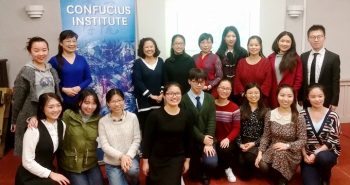 There was a significant change of format for the September branch meeting, in that instead of a single guest speaker, we had several, all from the Wellington branch of the Confucius Institute. The Confucius Institute was founded in China in 2004, with the purpose of promoting Chinese language and culture worldwide. The main subject of our speakers’ talks was therefore their experiences in teaching Mandarin and other aspects of Chinese culture to New Zealanders.
There was a significant change of format for the September branch meeting, in that instead of a single guest speaker, we had several, all from the Wellington branch of the Confucius Institute. The Confucius Institute was founded in China in 2004, with the purpose of promoting Chinese language and culture worldwide. The main subject of our speakers’ talks was therefore their experiences in teaching Mandarin and other aspects of Chinese culture to New Zealanders.
The first speaker was Ms Wen Powles, the current director of the Confucius Institute’s Wellington branch. Ms Powles gave a brief outline of the institute’s activities in promoting Chinese language and culture in schools and universities. This outline was expanded by the next speaker, Professor Yang Xiaoqing, the deputy director. She explained that since its founding in 2010, the Wellington branch has expanded its activities from three Mandarin Language Assistants (MLAs) working in three schools in 2012, to forty-eight MLAs working in 121 schools in 2016. The Wellington branch now covers all the southern part of the North Island, and its work was recognised by the 2015 Global Award for Outstanding Confucius Institute from its parent organisation. Professor Yang concluded her talk by advising that anyone interested in the Wellington branches activities should consult their web-site at http://www.victoria.ac.nz/ci.
The remainder of the talk covered three main sections: Teaching Chinese language and Culture to Professionals, Teaching Chinese language and Culture in Schools and MLA Experiences in New Zealand.
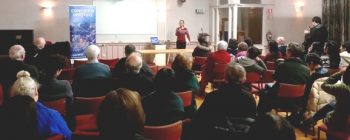 The first part of the Teaching Chinese language and Culture to Professionals section was covered by Ms Lu Chunxiao, the Confucius Institute Wellington Branch Chinese Teacher. Ms Chunxiao detailed how she had created and ran Chinese Language and Cultural Workshops for officials at the Ministry of Foreign Affairs and Trade (MFAT) and the Ministry of Business, Innovation and Employment (MBIE). She also spoke about the upsurge in interest in learning Chinese from general members of the public since the former mayor of Wellington, Celia Wade-Brown passed the HSK (the standard Chinese test for foreigners learning Chinese). As a result, the institute now plans to offer the HSK test at Level 1 to the public from this coming October.
The first part of the Teaching Chinese language and Culture to Professionals section was covered by Ms Lu Chunxiao, the Confucius Institute Wellington Branch Chinese Teacher. Ms Chunxiao detailed how she had created and ran Chinese Language and Cultural Workshops for officials at the Ministry of Foreign Affairs and Trade (MFAT) and the Ministry of Business, Innovation and Employment (MBIE). She also spoke about the upsurge in interest in learning Chinese from general members of the public since the former mayor of Wellington, Celia Wade-Brown passed the HSK (the standard Chinese test for foreigners learning Chinese). As a result, the institute now plans to offer the HSK test at Level 1 to the public from this coming October.
The second part was given by Ms Wang Yiqiu, a MLA. As well as working in local schools, Ms Wang has also taught officials from MFAT, the Prime Minister’s Department and other NZ government departments. To do this, she created a Survival Mandarin Course, covering basic greetings, special titles, and useful vocabulary and sentences (for example, directions, transportation, interesting places to visit). The course was based on handouts, role-play and word lists.
The next section, Teaching Chinese language and Culture in Schools was again split into two parts. The first part covered teaching the Chinese language, and we heard from three MLA’s: Mr Oliver Jiang, Miss Chen Xiang and Miss Li Ai.
Mr Jiang said that in his experience, there were three important things about teaching Chinese to students in NZ schools. First, focus on communication and practical use of the language, if necessary at the expense of more formal aspects (for example, grammar). Second, teaching should try to be topical, and include matters of current interest to the students. Finally, teachers must believe in the ability of their students to speak and write Chinese, despite the large differences between it and languages the students are more likely to be familiar with. Miss Chen Xiang emphasised the importance of flexibility, in adapting to different situations and focussing on the needs of the particular students. She said that MLA’s had to be aware that the NZ educational system and methods are very different from those in China, and to be successful, had to adapt accordingly. Finally, Miss Li Ai concluded with a description of the typical roles a MLA can expect to be involved in. In addition to teaching Chinese language and culture, these can include assisting the head teacher with other tasks and helping international students with their studies.
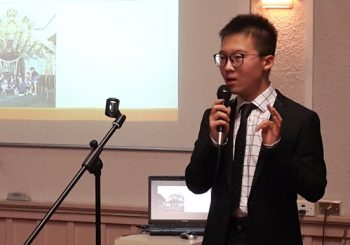 The second part of Teaching Chinese language and Culture in Schools covered promoting Chinese culture in schools. Again, we heard from three MLA’s: Miss Lu Lu, Mr Li Tong and Miss Jian Yang. Miss Lu Lu explained that although the most familiar Chinese cultural activities such as calligraphy, painting, singing and dancing should be included, concentrating only on these activities can be restrictive. To combat this, she has included less well-known aspects of Chinese culture, such as Lion Dancing, training in traditional Chinese musical instruments, traditional Chinese sports and Chinese food (including its preparation). Mr Li Tong spoke about his efforts to promote Chinese culture during Education Outside the Classroom (EOTC) week and by setting up Preparatory Chinese Club for students who are in years prior to those at which “official” teaching of Chinese culture begins. Finally, Miss Jian Yang described how she set up a Chinese Cultural Club at the school she works at, and has also ran (with support from the Confucius Institute) Cultural Workshops covering fan dancing, painting and Chinese cultural events such as Chinese New Year and the Mid-Autumn Festival.
The second part of Teaching Chinese language and Culture in Schools covered promoting Chinese culture in schools. Again, we heard from three MLA’s: Miss Lu Lu, Mr Li Tong and Miss Jian Yang. Miss Lu Lu explained that although the most familiar Chinese cultural activities such as calligraphy, painting, singing and dancing should be included, concentrating only on these activities can be restrictive. To combat this, she has included less well-known aspects of Chinese culture, such as Lion Dancing, training in traditional Chinese musical instruments, traditional Chinese sports and Chinese food (including its preparation). Mr Li Tong spoke about his efforts to promote Chinese culture during Education Outside the Classroom (EOTC) week and by setting up Preparatory Chinese Club for students who are in years prior to those at which “official” teaching of Chinese culture begins. Finally, Miss Jian Yang described how she set up a Chinese Cultural Club at the school she works at, and has also ran (with support from the Confucius Institute) Cultural Workshops covering fan dancing, painting and Chinese cultural events such as Chinese New Year and the Mid-Autumn Festival.
The last part of the talk, MLA Experiences in New Zealand, was given by Miss Wang Luming, Miss Shen Huisi and Miss Jiang Yue. All three mentioned initial bouts of culture shock and homesickness, but all felt that these could be coped with, especially given the support from their host families. In line with this, Miss Shen Huisi explained the importance of communication between the MLA’s and their host families, in particular to remove any misunderstandings as soon as possible. All three felt they had received useful experiences in New Zealand, which they hoped to be able to apply in their future careers, either in China or abroad.
WAI-TE-ATA PRESS UNVEILS UNEARTHED TREASURE by Sam Macintosh
On 15 September, Wai-te-Ata Press marked collaboration between the Dominion Federation of New Zealand Chinese Commercial Growers and Victoria University of Wellington with the unveiling of the sole surviving Chinese language typeface in New Zealand.
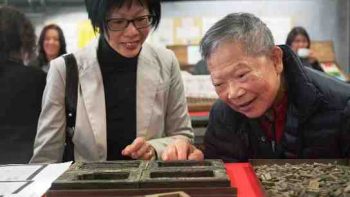 The typeface can be characterised as truly a diamond emerging from the rough, after having been unearthed from a farmer’s field in Pukekohe, It holds enormous cultural significance within the wider Chinese community, as it was used in the printing of the monthly Chinese growers newsletters from 1952 – 1972.
The typeface can be characterised as truly a diamond emerging from the rough, after having been unearthed from a farmer’s field in Pukekohe, It holds enormous cultural significance within the wider Chinese community, as it was used in the printing of the monthly Chinese growers newsletters from 1952 – 1972.
Additionally, historical copies of the Growers’ newsletters were also on display, adding to the significance of the typeface collection which is to be housed, restored and ultimately revitalised by the Wai-te-Ata press.
The event opened with an impassioned introduction by Dr Sydney Shep, currently in charge of Wai-te-Ata press. She emphasised the importance and gratitude of donations made to the project, noting involvement by the Chan family who have significant historical connections with the collection as their grandfather, Dan Chan, was the first editor of the monthly newsletter. Further, Dr Shep also gratefully acknowledged the support of the New Zealand Chinese Friendship Society, Victoria University and the New Zealand Chinese Society, among others.
For the New Zealand China Friendship Society, Michael Powles spoke of the importance of language and culture and the Society’s gratitude of being part of something as rewarding as acquiring and restoring this historic print collection.
In addition, the opening of the Chinese Scholars Studio was also announced. This was also located in Victoria University, and would be designed so as to further illustrate the aesthetic and cultural value of the print collection.
A WEEK IN THE LIFE OF THE NZCFS PRESIDENT IN CHINA
Chinese Language Week was celebrated over the week of 15 September 2016. NZCFS President Dave Bromwich was involved in a range of activities in Beijing and Gansu province, largely focused on the legacy of Rewi Alley. Below are the activities Dave was involved in during this time.
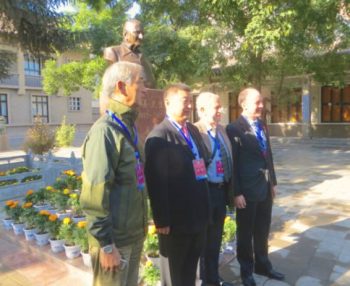
The celebrations brought together a very interesting group of international and Chinese people for this time, including Brian Hewson, Counsellor at NZ Embassy Beijing, Maurice Alley and Dorothy Waymouth, Alley family, Jenny Clegg, Vice President of the Society for Anglo-Chinese Understanding (the UK equivalent of NZCFS), Michael Crook, Chair, ICCIC (Gung Ho), and members of Youxie, Gansu leaders from Provincial government through to Shandan county level, and staff of Shandan Bailie School.
We first held a meeting in Beijing, which included a brief Gung Ho executive meeting at the Song Qingling museum. This also gave an opportunity for the visitors to hear what Gung Ho is doing throughout China. We then flew to Lanzhou, where we met at Lanzhou City University (LCU) to visit the new Rewi Alley museum there, then we had a meeting to present the Rewi Alley Research Centre. Michael, Maurice and I all reinforced the need to develop pragmatic strategies that keep the Rewi Alley spirit and legacy a living one. LCU firmly agree with this approach. 16 new consultants to the Research Centre received their certificates of appointment.
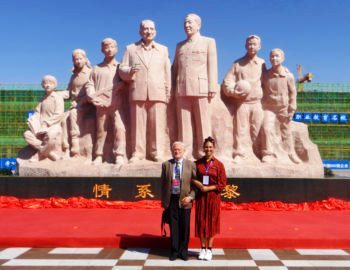
We then took the train to Shandan, where we visited the Shandan Bailie School (SBS), the tombs of Rewi Alley and George Hogg, as well as the Rewi Alley museum. At the tomb, Mr Xi Yuanping and I were asked to step forward to present the flowers on Rewi Alley’s tombstone, and likewise Hogg family members laid flowers on George Hogg’s stone. Xi Yuanping is the young brother of President Xi Jinping, and both are sons of Xi Zhongxun. Xi Zhongxun was an early honorary principal of Shandan Bailie School, and in his earlier years was also a young military officer in Shuangshipu at the time when Rewi Alley established the first Bailie School there. However, he and Rewi did not meet until later. Thus this is a very strong connection between SBS and top-level government that I was not fully aware of.
We then unveiled a statue that is the first stage in the building of a new Bailie International Vocational College, which will be a provincial level institution, expected to be up and running within two years. The photo of the statue shows Rewi Alley in the middle left, Xi Zhongxun to the right, and children either side representing ‘create and analyse’ – the Bailie Philosophy. I had the honour and privilege of giving a five-minute speech, along with our old friend Liu Xiaoyun, now party secretary of Shandan County, a Zhangye government leader, and Mr Xi Yuanping. The four of us then carried out the unveiling together.
To read more, please visit: https://nzchinasociety.org.nz/27538/a-week-in-the-life-of-the-nzcfs-president-in-china/ – Dave Bromwich, September 25, 2016
MANDARIN CORNER 汉语角 Saturdays 3.15-5pm
Room 103, 24 Kelburn Parade, Victoria University of Wellington.
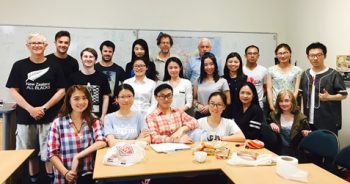 Mandarin Corner (Wellington), established in 1995 by NZCFS, is a weekly event where students learning Chinese meet with native speakers of Chinese for conversation and cultural activities in a friendly, relaxed setting, and is open to all level. Come along if you are interested, and attendance is free. Mandarin corner does not run during school holidays. For more information contact Yinghui Li at [email protected].
Mandarin Corner (Wellington), established in 1995 by NZCFS, is a weekly event where students learning Chinese meet with native speakers of Chinese for conversation and cultural activities in a friendly, relaxed setting, and is open to all level. Come along if you are interested, and attendance is free. Mandarin corner does not run during school holidays. For more information contact Yinghui Li at [email protected].
WHAT IS CHINESE MOON FESSTIVAL AND HOW IS IT CELEBRATED?
“Happy Moon Festival!”- from the New Zealand China Friendship Society.
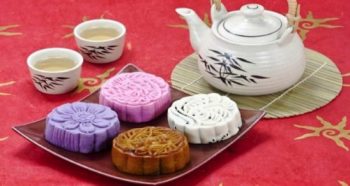 There are lots of Chinese holidays and festivals being celebrated in New Zealand by an increasing number of people each year. One such event is “Moon Festival”, which occurs on the same date each year – the 15th of September. The Moon Festival is also known by other names, such as the Mid-Autumn Festival and the Moon Cake Festival. But what exactly is Moon Festival and how do we celebrate it?
There are lots of Chinese holidays and festivals being celebrated in New Zealand by an increasing number of people each year. One such event is “Moon Festival”, which occurs on the same date each year – the 15th of September. The Moon Festival is also known by other names, such as the Mid-Autumn Festival and the Moon Cake Festival. But what exactly is Moon Festival and how do we celebrate it?
Moon Festival is held on the 15th day of the eighth month in the Chinese Han calendar, on the night of the full moon that appears between early September and early October in the Gregorian calendar. Ancient Chinese believed that the moon was at its brightest and roundest on this night, signifying a family reunion. The middle of August in the Chinese calendar is also a time when crops, including fruit and vegetables, are harvested. To celebrate the Mid-Autumn Festival, we eat moon cakes and freshly picked fruits such as watermelon, we drink tea and cassia wine, and we enjoy banquets with family members.
There are three fundamental concepts which are closely tied to one another in celebrating the Moon Festival:
- Gathering, such as through family and friends coming together or harvesting crops for the festival.
- Thanksgiving, giving thanks for the harvest or for harmonious unions
- Prayer, such as for babies, a spouse, beauty, longevity, or for a good future
More information: https://nzchinasociety.org.nz/27152/what-is-chinese-moon-festival-and-how-is-it-celebrated/
NZCFS EXPLORE CHINA: THE NORTHWEST/SILK ROAD TOUR – OCTOBER 2017, 21 DAYS IN CHINA
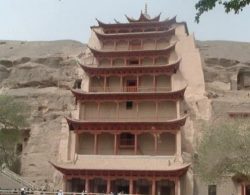 The latest NZCFS educational tour in the “Explore China” series is a first to travel deep into Xinjiang, skirt around then cross the Taklamakan desert to explore the ancient civilisations as well as the dynamic cultures in this area. Follow the silk road west through Gansu to enjoy the legacies left by diverse travellers on the road, ending with NZCFS’ own connection to Bailie schools and cooperative through Rewi Alley.
The latest NZCFS educational tour in the “Explore China” series is a first to travel deep into Xinjiang, skirt around then cross the Taklamakan desert to explore the ancient civilisations as well as the dynamic cultures in this area. Follow the silk road west through Gansu to enjoy the legacies left by diverse travellers on the road, ending with NZCFS’ own connection to Bailie schools and cooperative through Rewi Alley.
Xi’an to Kashgar: Explore the ancient historical civilisations and buried cities in the vast Xinjiang Province. Enjoy the culture of the Uighur and other peoples, and travel through dramatic landscapes as we journey east by train and coach along the Old Silk Road into Gansu. Follow the legacy of Rewi Alley and the Bailie school he founded. For more information on our tours, please visit: https://nzchinasociety.org.nz/news/tours-to-china/.


